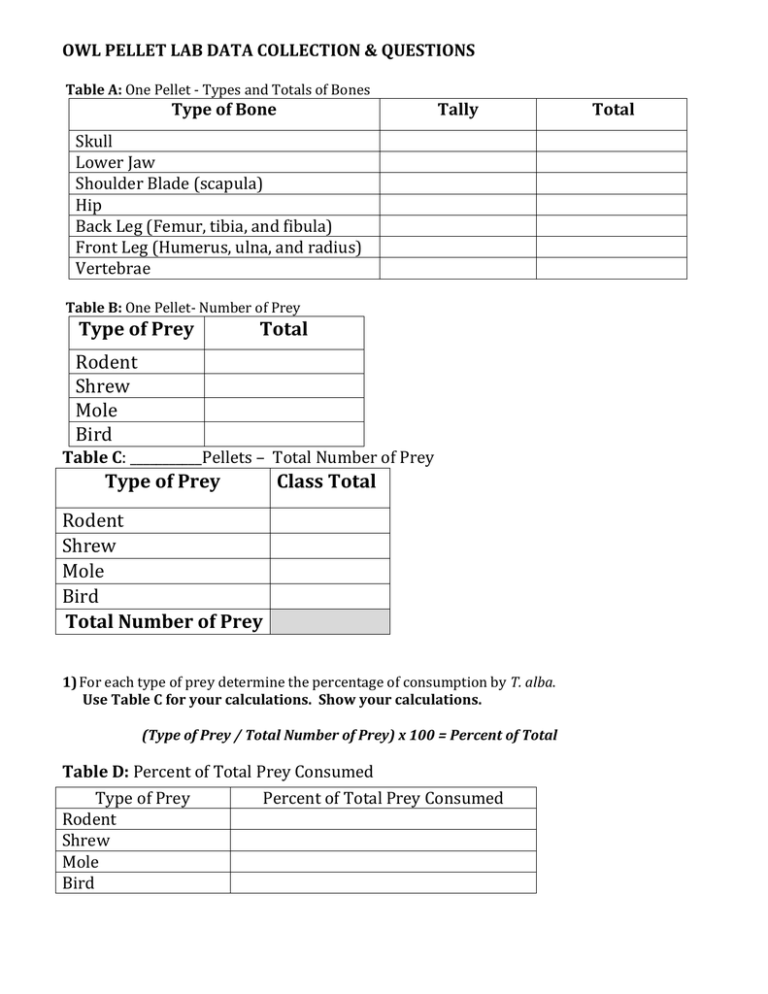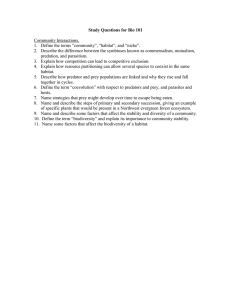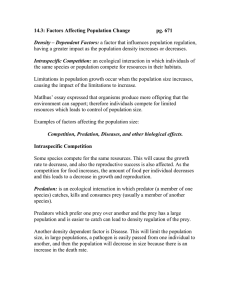OWL PELLET LAB DATA COLLECTION & QUESTIONS Type of Bone Tally
advertisement

OWL PELLET LAB DATA COLLECTION & QUESTIONS Table A: One Pellet - Types and Totals of Bones Type of Bone Tally Skull Lower Jaw Shoulder Blade (scapula) Hip Back Leg (Femur, tibia, and fibula) Front Leg (Humerus, ulna, and radius) Vertebrae Table B: One Pellet- Number of Prey Type of Prey Total Rodent Shrew Mole Bird Table C: ___________Pellets – Total Number of Prey Type of Prey Class Total Rodent Shrew Mole Bird Total Number of Prey 1) For each type of prey determine the percentage of consumption by T. alba. Use Table C for your calculations. Show your calculations. (Type of Prey / Total Number of Prey) x 100 = Percent of Total Table D: Percent of Total Prey Consumed Type of Prey Percent of Total Prey Consumed Rodent Shrew Mole Bird Total 2) Calculate the number of prey organisms consumed by T. alba annually. Show your calculations. a. Use Table C data to calculate the Average Daily Consumption = _________prey per day Total Number of Prey / Class Pellet Total = Avg. Daily Consumption b. Use your answer above to calculate the Annual Consumption of Prey = _______prey per year Avg. Daily Consumption x 365 = Annual Consumption 3) Use Table D data to calculate the Annual Consumption of each prey. Percent of total Prey x Annual Consumption = Annual Consumption of Individual Prey a. b. c. d. Annual Consumptions of Rodent= __________ Annual Consumptions of Shrews=__________ Annual Consumptions of Moles=____________ Annual Consumptions of Birds=_____________ Questions: Answer on a Separate piece of paper. 1. Assume that a T. alba eats about 10% of the prey population in their territory each year. If you know that the yearly intake by the owls is 10%, what is the total number of prey organisms in T. alba’s community? (show any math you did to calculate this) 2. Assume T. alba’s prey organisms only eat about 10% of their food source (seeds, etc.) in a given year and that their consumption rate is similar to that of T. alba’s. (In other words, they require a similar amount of seeds a day, and therefore during a year) How primary producers would be present in the community surrounding T. alba? (show any math you did to calculate this) 3. Draw a food pyramid showing the number of organisms at each of these levels. 4. Draw an energy pyramid showing the amount of energy passed from one level to the next for the community of T. alba. The owl has 0.5 Kcal of energy. 5. You calculated the abundance of organisms necessary to support one owl in the ecosystem. What else would be necessary to maintain a healthy owl population in this ecosystem? 6. There is typically no trophic level above owls in nature. Why is this? Explain 7. Hoo eats who? Draw a simple FOOD WEB that included ALL the prey items discovered in the owl pellets. Include other organisms to make the web complete and label their role as producer and consumer (primary, secondary, tertiary, etc.). Remember, an organism can act at more than 1 trophic level in a food web!



